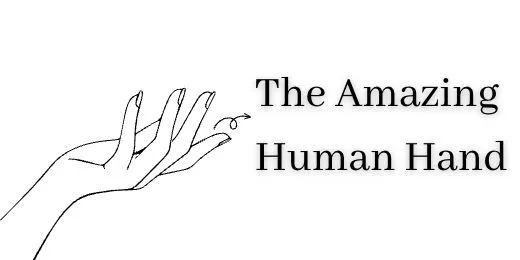The human hand is a highly vital tool that is both complicated and fascinating. In this post, we’ll look at the structure of the hand, how it operates, and how it might be used to create new things in the future. Modern science is changing our lives by utilising the extraordinary potential of the human hand. Industrial robots, for example, have hands that can carefully handle goods or play musical instruments and prosthetic hands that can perceive what is happening around them.
Introduction: Overview of the Human Hand
One of the fascinating components of our body is our hands. They can write and play the piano but also open a jar and hammer a nail. But what distinguishes them?
Let’s examine the anatomy and physiology of the hand in more detail. The human hand is composed of 27 bones. The three major groupings are the carpus (wrist), metacarpus (palm), and phalanges (fingers). The muscles and ligaments that link these bones allow us to move our fingers in various directions.
The skin on the hand is thicker and more durable than the skin on the rest of the body.
This is because it must withstand all of the graspings and touching we perform daily. There are some vital components beneath the skin, including:
- Joints: They enable us to bend our fingers.
- Nerves: They send signals from the brain to the muscles, instructing them on when to move.
- Blood vessels: These are the vessels that transport oxygenated blood to the tissues.
The hand is a great resource that we utilise for various purposes. It allows us to move freely and with high sensitivity, allowing us to engage with our surroundings in multiple ways.
Anatomy of the Human Hand
The human hand is an incredible and intricate tool. It has 27 bones, 29 joints, 34 muscles, numerous tendons, ligaments, blood vessels, and nerves. The hand anatomy is made up of the wrist bones, palm bones, and finger bones.
We can curl our fingers toward our palms by using the flexor muscles on the forearm’s palm side. In contrast, the extensor muscles on the back side of the forearm will enable us to straighten our fingers away from the palms. The humerus bone serves as the origin of each of these muscles.
Uses and Functions of the Human Hand
Our hands are an incredible and complex body part, made up of bones, joints, muscles, tendons, ligaments and nerves. These all work in sync to allow us to take on various activities. Our bones give our hands their structure and support the muscles, while the joints enable us to move in different directions.
The muscles and tendons working together allow us to grip and hold objects. Our nerves give us the ability to feel touch and temperature. It’s impressive that our hands can do everything from writing and typing to cooking and cleaning.
The potential of Human Hands: Robotics and Prosthetics
The human hand is truly incredible! It can be used for various tasks such as writing, sketching, and picking up small objects. Furthermore, it has a firm grip and can hold things tightly.
Robotics and prosthetics are two industries that demonstrate the incredible potential of the human hand.
Robotic hands are becoming increasingly sophisticated, and they are now capable of performing previously impossible tasks. Furthermore, prosthetic hands are becoming more lifelike and functional for users.
Care and Maintenance of the Human Hand
We must take good care of our hands to perform daily tasks such as writing, cooking, driving, and participating in sports. Here are some tips for keeping your hands healthy and happy:
- Hand washing with soap and water regularly can help to remove dirt, bacteria, and other germs.
- To keep your hands moisturised, use hand cream or lotion regularly. This will reduce damage and dryness.
- Wear gloves when performing dangerous activities such as working with power tools or gardening.
- Make sure to clean and bandage any cuts or abrasions you may have until they heal.
By following these simple guidelines, you can keep your hands healthy and safe.
Risks Associated with Improper Care and Overuse of Human Hands
To avoid problems, taking care of your hands and using them responsibly is critical. Hand hygiene issues can lead to dry, cracked hands infected with bacteria and fungi. Excessive hand use can also lead to repetitive strain injuries such as carpal tunnel syndrome. As a result, to stay safe and healthy, take good care of your hands and use them responsibly.
Conclusion
It’s amazing how complicated and powerful something as simple as our hands can be! The human hand has astounding anatomy, from its delicate bones to powerful muscles, nerves, and tendons.
Our hands can perform extraordinary feats such as violin playing and assisting us with everyday tasks such as typing or writing. We can learn more about their use, repair, and design potential with more research.



